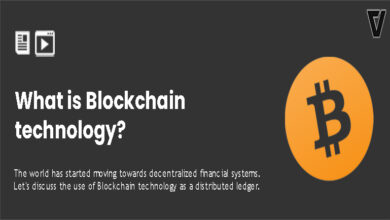Blockchain Technology may appear strange at first. But often, accounting professionals have been using technological platforms to improve and expand services since past decades. Accounting has long employed Microsoft excel and other Enterprise Resource Planning (ERP) platforms. The digitization of accounting data and processes can be simply addressed by this technology. It is the next tool of the professional business toolbox. Understanding, using and implementing the technology will become increasingly important for CPAs working in public practice, private enterprises or institutions. Though it is not a fresh concept in 2021, it is important to gain knowledge on it. Hence, keep reading!
What is a Blockchain?
Blockchain is a Decentralized Ledger System created in October 2008. It was by a person or group of people operating under the name Satoshi Nakamoto. The basic concept of it is to make Bitcoin trading easier. Nakamoto created this concept to solve the problem of identical spending in digital currencies.
In order to enable monetary exchanges without a third party, to provide a resilient distributed ledger of transactions and to provide an immutable audit trail in a low trust environment, the technology is a response to the global financial, according to Nakamoto.
How Blockchain Works?
It is a mathematical cryptographic code. The most recent transaction is recorded in a digital code known as a block. First, a block completes the necessary data and gets verified. Then any additional information or subsequent events sequentially link to that first Block by becoming a subsequent block. When a block is finished, it generates a secure hash code that links it to the next Block. The Merkle Root of the transaction is also included in the Block. It is a mathematical process for organizing many occurrences in a more understandable manner.
Real-World Applications
Consider the hypothetical case where a small accounting company has established a private Blockchain. It is managed by the firm and includes the firm’s top 50 audit clients as members instead of manually certifying outstanding receivables, which can take days. Also, create a stack of emails and other data that can get lost in the flow.
Blockchain allows this process to be completed in real-time. Blocks of data are verified by administrators. Then adding to the network, Network members confirm and verify them on a regular basis. However, the ability to download and use Blockchain technology is the first step towards providing blockchain-enabled accountancy and advising services.
Public Blockchain vs Private Blockchain
Public Blockchain:
First, learn the differences between Public and Private Blockchains. There is no single blockchain for people and businesses. They can choose from hundreds of alternative options. For example, anyone can join the public blockchain that supports the Cryptocurrency “Bitcoin” by installing the relavant software.
Private Blockchain:
Private Blockchains has a specific limit on who can join the network. Examples of private Blockchains on the market are FedEx, Maersk, Wal-Mart, UPS and British Airways. They are already experimenting and using Blockchain technology in order to improve supply chain performance, information and reporting. Private Blockchains can provide multiple levels of access and modification to different users, which is advantageous to the Accounting Profession.
- The discussion above is not financial advices, investment advices, or taxing. It is a basic study on the risks of cryptocurrency investing which is done based on resourcing sources.


